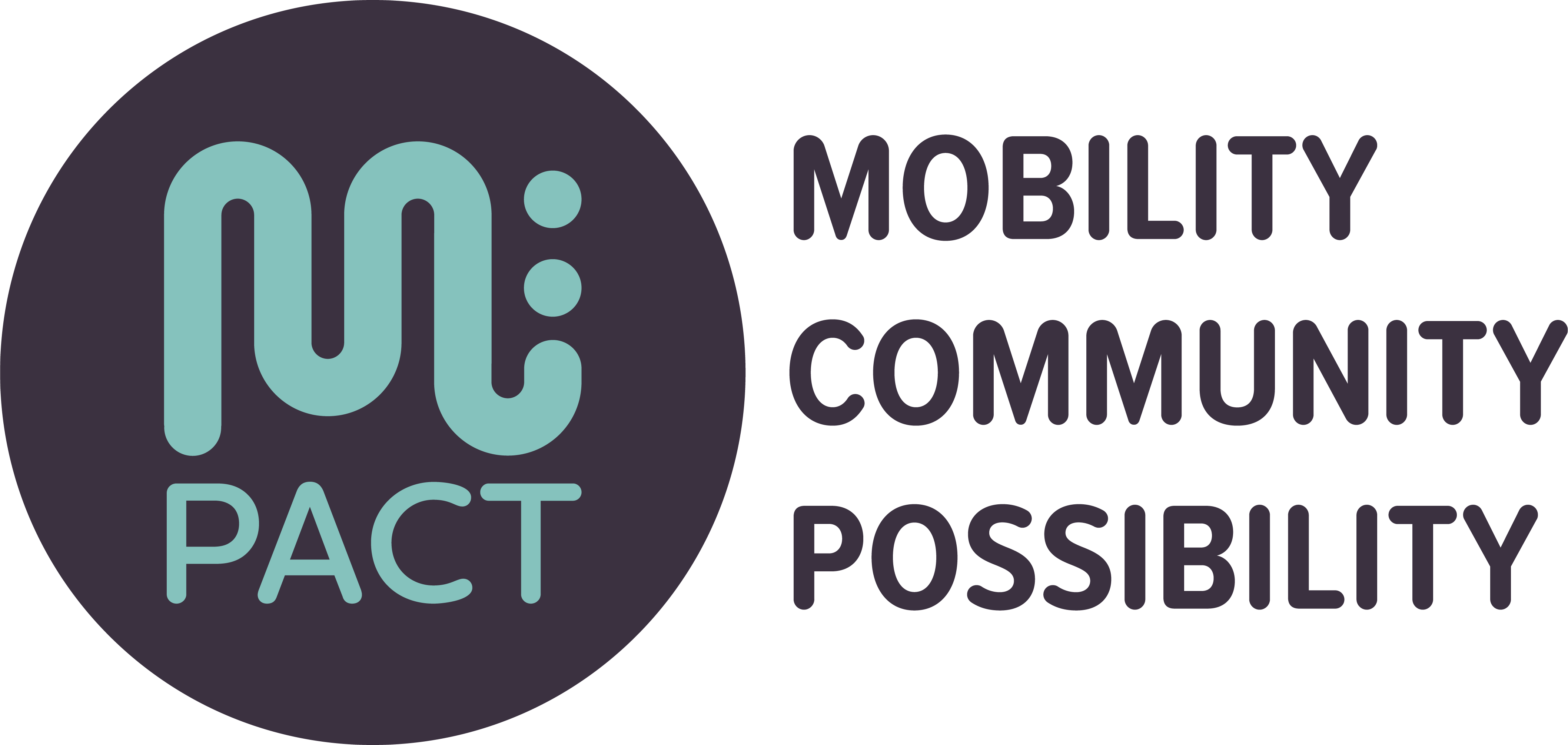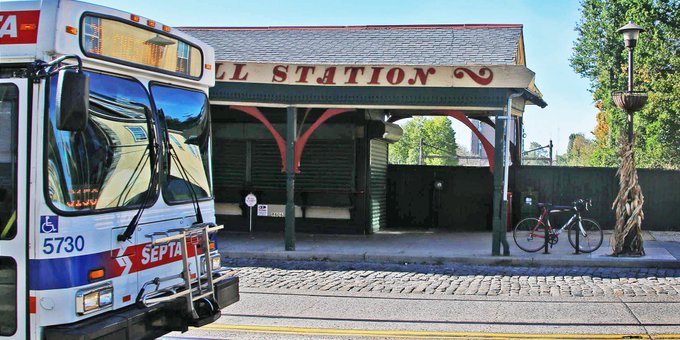We’ve been learning about the Philadelphia region in anticipation of the 2024 Mpact Transit + Community conference coming up in October. Last fall, we gathered regional stakeholders to talk about how the conference could help provide momentum for regional priorities. More recently, our first conference planning meeting in February with the National Steering Committee featured speakers from the region, including our local host co-chairs, SEPTA and the Delaware Valley Regional Planning Commission (DVRPC), as well as the Chamber of Commerce for Greater Philadelphia, the Philadelphia Convention and Visitors Bureau, and our board chair, Flora Castillo. The speakers talked about history, demographics and projects underway. We’re still learning – and will be right up to and during the conference – but the following is clear:
The Philadelphia region offers an incredible smorgasbord of transit options plus great bicycling networks. A diverse array of neighborhoods evolved along these routes. All together, the region is a showcase of the history and resilience of transit-oriented communities.
As speakers from DVRPC explained, rail investments in the nineteenth century sparked distinctive development patterns that expanded along the subways, streetcars, commuter rail lines and bus routes that followed, defining the physical form of the region. This helped establish the template for what would later be called transit-oriented development (TOD).

City Center, one of the biggest residential downtowns in the US, has three major transit hubs: Jefferson Station, Suburban Station and 30th Street Station. City Center saw a lot of growth in recent years, including new buildings with no parking, and is still dotted with cranes. Transit routes connect neighborhoods and commercial corridors across the city, many with distinct cultural roots, from African American to Puerto Rican, Asian to European. Rail lines reach outward to suburban stations and towns, in Pennsylvania and New Jersey. There are more than 150 active stations in Philadelphia and the suburbs. Some of the oldest transit-oriented developments in the nation are near these stations.
A living laboratory
The Philadelphia region is also a living laboratory because people, businesses and cultural and civic institutions are constantly redefining and reshaping places. And because transit and other modes are periodically refitted, redesigned and extended.
SEPTA is currently engaged in several projects to re-cast the system for current needs. One of these, Reimagining Regional Rail, focuses on the century-old commuter rail lines, which SEPTA joined in 1984 via the Center City tunnel into one regional rail network. SEPTA also is working on updated wayfinding and branding as SEPTA Metro; on Trolley Modernization, involving new, more accessible station designs and vehicles; and SEPTA Bus Revolution, the first comprehensive redesign of the entire bus network.
SEPTA recently launched the Transit Supportive Community Development program, to encourage equitable and sustainable community development alongside high frequency transit-corridors. Among the goals: boost ridership, deliver economic development and benefit the environment.
Development in the city and region
Development in the city, our speakers said, ranges from row homes to mixed use and residential multifamily to high rise buildings near City Center. The historic nature of the city, with narrow streets, tends to lead to creative infill on smaller parcels, “skinny developments” woven into the existing fabric. Overall, development patterns are radiating outward from City Center, to such places as North Philly, Kensington and Strawberry Mansion.
A real estate blogger, in a post from last spring, described projects in South Kensington. An analysis of building permits from the Economy League includes heat maps that show where new development is concentrated – and where it is not. “From the perspective of inclusive and equitable growth,” the piece says, “it remains to be seen if the city’s policy toolkit is sufficient to avoid displacement of lower-income residents as rents and property taxes face upward pressure.” For a look at a mixed-income TOD in a Puerto Rican neighborhood of North Philadelphia, check out our podcast from a couple of years ago.

SEPTA’s transit-oriented communities program
SEPTA is taking a multi-layered approach to transit-oriented communities. For land they own, often under-utilized parking lots near suburban stations, they are developing station area plans. For other parcels near transit stations or stops, they are a stakeholder, offering development services and coordination. And they’re also playing a role as advocate – for zoning, supportive state and federal legislation – and for being a partner at the table.
They want to use their properties, and their roles as stakeholder and advocate, they said, to make the case for transit-oriented communities. The intent is to illustrate what a site might look like, get the community involved and develop RFPs. One project, Ambler Station in a walkable community on the far northwest, focuses on a 5-acre parcel. The biggest issues there, SEPTA heard at a recent open house, are affordability, storm water issues and traffic.

SEPTA speakers talked about the potential for car-free living along transit corridors. Their vision is for people-first communities, designed at human scale, for increased mobility through seamless multimodal trips and for economic opportunity realized through the lower living costs of transit-oriented communities. In addition to creating station area plans, they’re also working with DVRPC on transit-oriented community typologies, recognizing that no one size fits all.
We’re excited to go deeper on these and other issues – via conference sessions and mobile workshops – at the 2024 Mpact Transit + Community conference, coming to Philadelphia October 20-23, 2024.
Facts about the Philadelphia Region
Southeastern Pennsylvania covers 5% of PA’s land area and accounts for 42% of the Commonwealth’s economic activity. (Source: SEPTA Forward, p 5)
The greater Philadelphia region, with 350 diverse cities, boroughs and townships in PA and NJ, has a population of about 6 million. From 2010-2020 it grew by 4.7%, with the City of Philadelphia growing the most. (Source: DVRPC presentation)
Nearly half (45%) of population in southeastern PA lives within a half mile of rail and frequent SEPTA transit. That’s 1.9 million people living on only 10% of the land. (Source: SEPTA presentation)
The region boasts an array of transit options, including the nation’s largest trolley network, a robust bus system, a subway line (the north-south Broad Street Line), an elevated train (the east-west Market Frankford Line), regional rail and the Norristown High Speed Line. Regional providers include SEPTA, NJ Transit, PATCO and Amtrak, along with Indego Bike Share.
Philadelphia is consistently ranked among the nation’s most walkable cities. Center City Philadelphia is the 2nd largest residential downtown in the US. Downtown foot traffic is at 84% of pre-pandemic levels. (Sources: PHLCVB, DVRPC presentation, referring to 2023 Philadelphia Inquirer piece about downtown recovery- paywall)
Philadelphia is a majority-minority city where 85 languages are spoken. It has an incredible diversity of neighborhoods and a rich cultural heritage of art, music and food. (Sources: DVRPC and conversations with people from the region)
Philadelphia is the largest poor city in the US. 380K people struggle daily. Nearly a third of under-18 residents (29%) live below the federal poverty line. (Sources: SEPTA and DVRPC, citing Philadelphia Inquirer; BillyPenn)
Philadelphia is a city of firsts – first World Heritage City in US, first zoo, first science museum, first free library. Mayor Cherelle Parker, who took office this year, is the city’s first female mayor. (Sources: conversations with stakeholders from the region)


